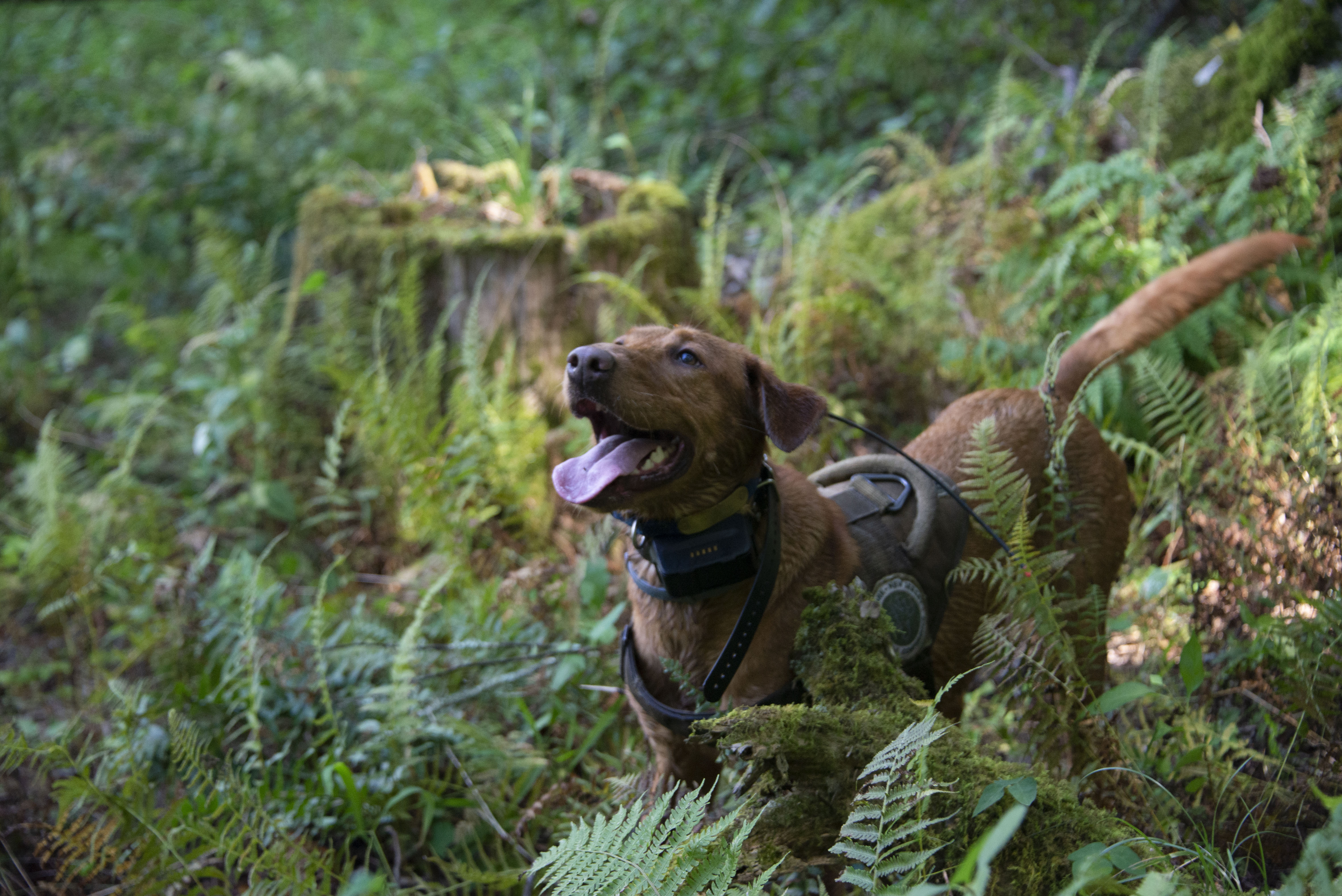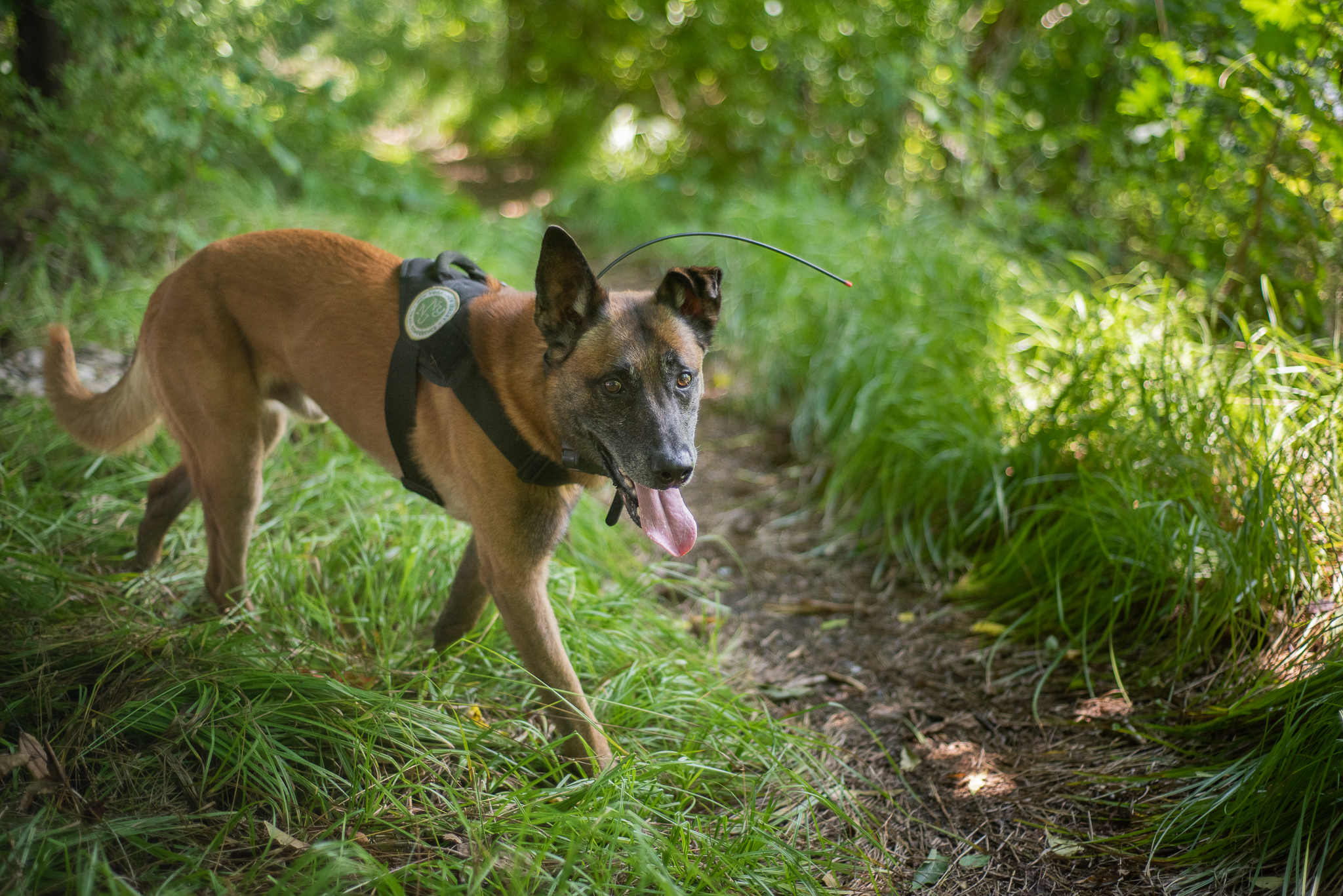What is a conservation dog?
Conservation Dogs are specialized detection canines trained to find targets of ecological significance using their sense of smell
What do conservation detection dog and handler teams do?
The conservation dog method is most often used to help with three general tasks:
- Ecological monitoring- dogs can help us survey a discrete geographic location for a target in order to gain more information about that target or its interaction with features of the environment. Example: Surveys for bat and bird carcasses on wind farms.
- Invasive species detection- dogs can help find invasive species along introduction pathways to prevent invasions. They can also help find individuals left over after removals to assist management efforts, and search the boundaries of known infestations to improve containment. Example: Dogs act as a double check at boat inspections.
- Antipoaching- dogs can help law enforcement find illegally traded wildlife and poached goods. Example: Dogs work at checkpoints to prevent the transportation and sale of ivory.
What is the NY-NJ Trail Conference Conservation Dogs Program?
We are two handlers, Joshua Beese and Arden Blumenthal, and our three highly motivated working dogs, Dia, Fagen, and Peat. We are a team committed to protecting the ecological integrity of Hudson Valley native habitats through invasive species detection and native species monitoring. While other conservation dogs and handler teams travel to consult on detection projects all over the country for stints of time, our innovative and one-of-a-kind program is permanently housed within the NYNJTC. This regional commitment enables us to dedicate our time to helping local non-profits and state agencies solve critical, expansive, and deep-rooted conservation problems.
What has the Conservation Dogs Program done so far?
So far our team has worked on over 10 species, although some of these projects have been retired. We continue to work on the following invasive species projects:
- Scotch broom
- Kudzu
- Crested late-summer mint
- Sticky sage
- Spotted lanternfly (egg masses)
We have worked on and are actively pursuing working on the following ecological monitoring projects:
-
Bobcat scat
-
Native turtles (wood)
-
Small whorled pogonia
-
New England cottontail pellets
We have an interest in the following projects:
-
Multiple species of native plants
-
Blanding's and bog turtles
-
Fisher scat
Can the Conservation Dogs Program help me with my project?
We'd love to collaborate on your project. If you need help finding a rare target, whether it be invasive or native, we're hoping to sit down and figure out if our team can assist.
Are your services expensive?
The price of projects will vary based on several factors:
-
Do we already work on the target you are interested in?
-
Where are the survey sites located?
-
How many hours of surveying will we be doing?
Generally, hiring a dog/handler team will be more expensive than a single human surveyor, but studies have shown that dog/handler teams are more efficient than human searchers alone. We recommend cost-sharing by pairing up other PRISM partners who share similar project interests.



